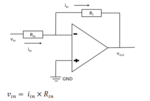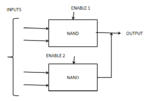blackdragon12
Newbie level 5

- Joined
- Nov 11, 2012
- Messages
- 10
- Helped
- 0
- Reputation
- 0
- Reaction score
- 0
- Trophy points
- 1,281
- Activity points
- 1,360
Hey guys so Ive been studying upon these topics recently and these are some questions that I was presented with from discussing these topics with other electronic engineers.. any help is appreciated 
1. How do you lay a PCB board out?
2. Define Gain margin and Phase Margin
3. What is sampling frequency corresponding to 10kHz signal?
4. What is CMOS capacitance?
5. Describe what a short circuit is and how to solve it?
6. How would you amplify 100mV to 1V?
7. Why does a ring oscillator oscillate?
8. Design a 128:1 MUX from 4:1 MUX. How many MUX and selection lines are needed?
9. How do you test a regulator?
10. Can you draw an inverting op-amp?
11. Build a 2NAND out of MUXs
12. Convert a 2’s complement 16-bit string to compute its absolute value
1. How do you lay a PCB board out?
2. Define Gain margin and Phase Margin
3. What is sampling frequency corresponding to 10kHz signal?
4. What is CMOS capacitance?
5. Describe what a short circuit is and how to solve it?
6. How would you amplify 100mV to 1V?
7. Why does a ring oscillator oscillate?
8. Design a 128:1 MUX from 4:1 MUX. How many MUX and selection lines are needed?
9. How do you test a regulator?
10. Can you draw an inverting op-amp?
11. Build a 2NAND out of MUXs
12. Convert a 2’s complement 16-bit string to compute its absolute value
Last edited:





